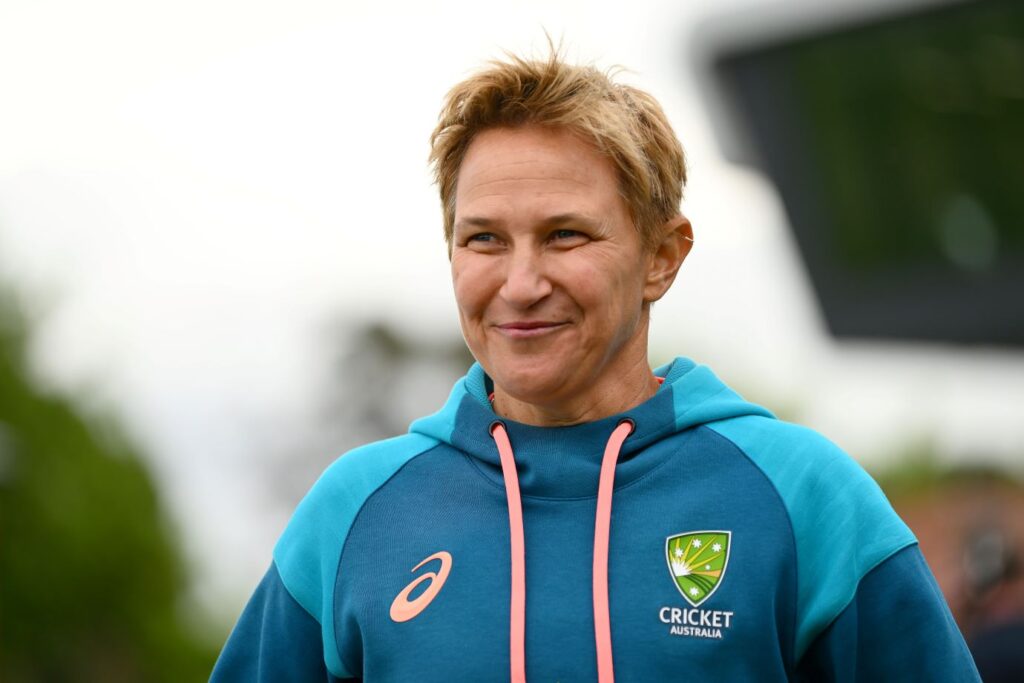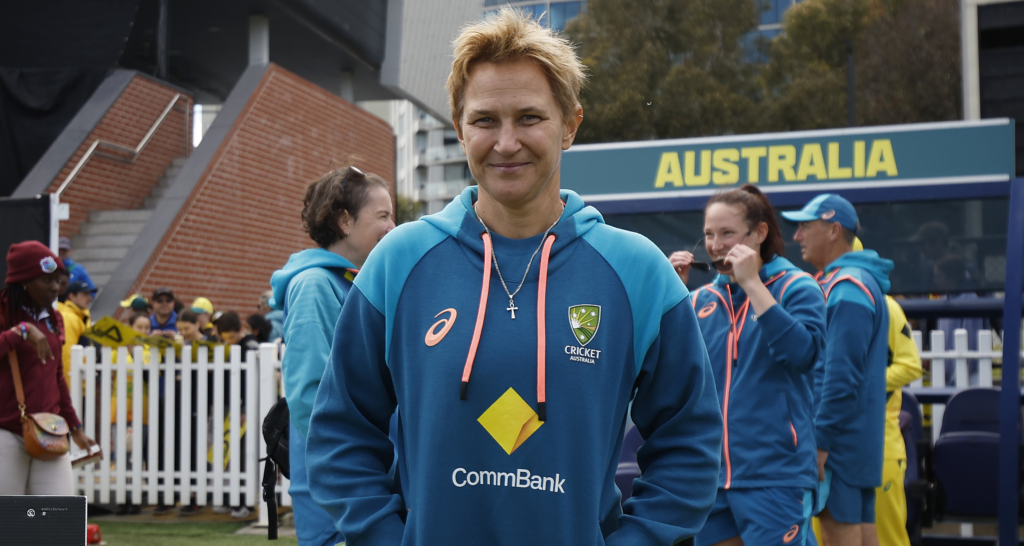When Shelley Nitschke retired from her career as a national cricketer in 2011 after playing 122 matches for Australia, she had no intention of forging a career as a coach.
Initially she wanted some time away from the sport, which she did for a few years before pursuing a development role in the South Australian Cricket Association.
After a few years in regional development, Nitschke moved into the high-performance space, which is when she realised it was what she really enjoyed doing.
“When I got back into that high-performance environment, that was probably when I realised how much I missed it and that I really liked being back in and around high performance and high performing teams,” Nitschke tells Women’s Agenda.
She took on a role in the Australian Women’s Cricket Team in 2018 working alongside then coach Matthew Mott, and later coached the Perth Scorchers.
In 2022, Nitschke threw her hat in the ring to take on the top role of coaching of the women’s team and was successful in getting the job. She’d already been serving as the interim Head Coach for a few months at the time, after Mott’s departure.
“It was really exciting. It’s an amazing team, and it’s a massive honour to be awarded the role and responsibility of coaching the Australian women’s cricket team, given all our recent success and where the game’s going,” Nitschke says
“There was certainly an element of, ‘this is real now’. When I got that permanent role, it was an honour, it was exciting, but it was also petrifying.”

How Nitschke approaches leadership as Head Coach
“The main thing that I keep coming back to is just to be authentic and back myself, as well as to care and to challenge.”
With more women in leadership roles in Australian sport than ever before, we’re witnessing a wave of new leadership styles coming through the ranks. For Nitschke, she sees all different styles of leadership as effective, but primarily she tries to be consistent in what she does.
“I don’t think there’s one formula you see across the sporting world,” Nitschke explains.
“There’s so many different coaches and styles of coaches, and they’ve all got their nuances, and they’ve all got their strengths and weaknesses. But consistency is the key.”
The ‘astronomical’ growth of women’s cricket
Nitschke retired from her career as a player in 2011, and she says it’s hard to fathom just how far the game has come in the decade since her retirement. As head coach of the women’s team, she’s had a special insight into the growth of the sport from an international level all the way down to the grassroots.
“That was 13 years ago and the growth from there to now has been amazing. You would expect it to take 20 years,” she says.
“Players can now be full-time cricketers, and there’s been growth in the franchise space and just the fact that I’m coaching the national women’s team, and they’re all full-time, I’m full-time and I’ve got full-time staff – so the growth is really positive.
“There’s been so many changes, and it’s filtered down to domestic players as well, and even the groundswell now of younger players getting interested in the game.”
“The growth in that time has just been astronomical, really.”

Where to from here for women’s cricket?
For Nitschke, attracting large crowds for the Australian Women’s Cricket Team at home and seeing other nations across the globe build up strong national teams would be great to see over the coming years.
“From Australia’s point of view, we go overseas to India and England even, and get some really good crowds,” she says. “I’d love to see us be able to get some really good crowds on home soil. I don’t think we’re quite there yet.”
Nitschke notes how special it was to witness the jaw-dropping crowd of 86, 174 people packed into the Melbourne Cricket Ground for the 2020 T20 World Cup final.
“And just from a global perspective, the landscape is probably dominated by three or four really strong teams. I’d love to see other nations really start to build up and challenge and have a strong international competition, which is certainly going that way already.”
Meanwhile, one of the highlights of Nitschke’s job is getting to see young kids engage with the players in the women’s team. And the best part? It’s not just girls that are interested, it’s boys too.
“Once upon a time, we’d have clinics on the oval, and it’d be all girls because it was the females playing,” she says.
“But I love it now when there’s young boys out there wanting to get our players autographs.”
Thanks to our partner CommBank. CommBank supports women in business and the community across all industries and sectors through its Women in Focus team. For more information head to WomeninFocus.com.au.

